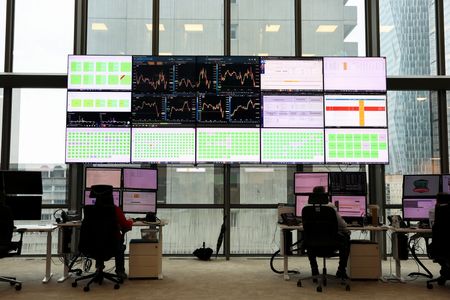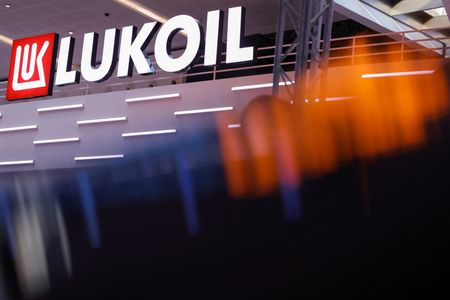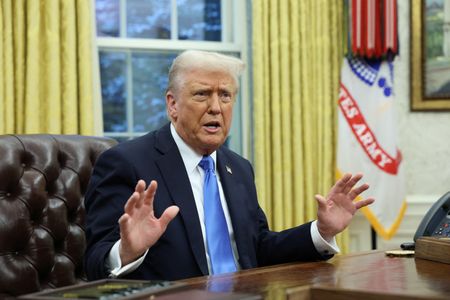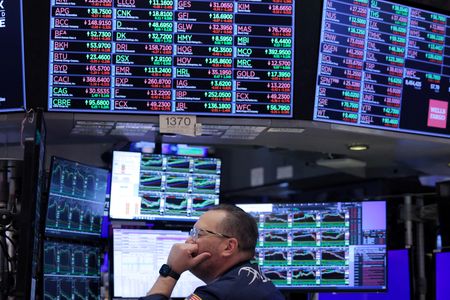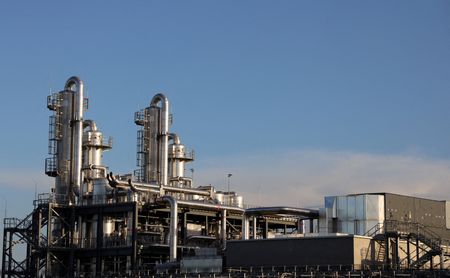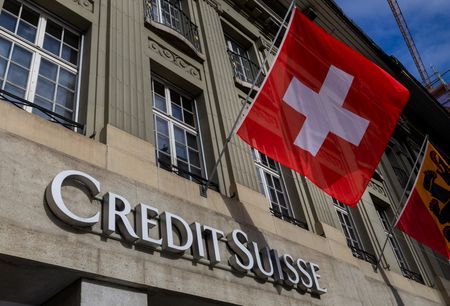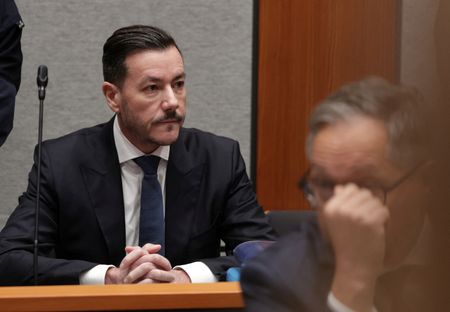By Alun John, Dhara Ranasinghe and Stefano Rebaudo
LONDON (Reuters) -France’s financial markets are riding a roller-coaster as the country grapples with one of its worst political crises in decades, and while sentiment is improving, the bumpy ride is not over.
French Prime Minister Sebastien Lecornu has promised to suspend a landmark pension reform until after the 2027 election, sacrificing one of President Emmanuel Macron’s achievements to ensure the government’s survival.
Here’s a look at where markets stand, and what comes next.
BOND VIGILANTES IN HIDING?
The gap between 10-year French and German bond yields, the premium investors require to lend to France, is around 78 basis points, down from almost 90 bps last week.
It could tighten towards 75 bps, said Citi’s senior rate strategist Aman Bansal.
It narrowed as investors focused on political stability over long-term fiscal worries. Lecornu’s plan to suspend pension reform means he’ll likely stay in his job, avoiding snap elections, even if some parties have called a no-confidence vote for Thursday.
RBC BlueBay Asset Management senior portfolio manager Kaspar Hense said the firm had closed out of its short position – a bet on price falls – in French bonds last week on expectations a political compromise would be found.
“Demand for OATs (French bonds) remains strong at these levels of real and nominal yields,” said Reinout De Bock, head of European rate strategy at UBS.
RATINGS WATCH
French borrowing costs remain among the highest in the euro zone, and because suspending the key pension reforms keeps pressure on public finances, France is vulnerable to further ratings downgrades.
Lecornu says the suspension would cost 400 million euros ($463 million) in 2026 and 1.8 billion euros in 2027. Without offsetting measures, France’s debt-to-GDP ratio would fail to stabilise, analysts say.
Goldman Sachs reckons permanent suspension of the pension reform would add 0.5% of GDP to the deficit by 2035, so debt as a share of GDP over the next decade stabilises closer to 130% compared to around 113% now.
Moody’s, which rates France at Aa3 with a stable outlook, reviews France on October 24.
“We expect some downgrade pressure but this is priced in by markets,” said BlueBay’s Hense.
STOCKS SOAR
France’s blue chip share index rose 2.6% on Wednesday, set for its best day since April’s tariff bounceback, but that’s not much to do with politics — luxury giant LVMH surged 14% after results.
French midcaps are up around 1% but have underperformed longer term, up nearly 10% in the past two years, compared to 15% for the blue chip index, and 26% for the overall European benchmark.
And that could continue.
Claudia Panseri, chief investment officer at UBS Wealth Management France, said that even if politics stabilises, fiscal and political challenges would still hang over domestic stocks.
“European investors may prefer to focus on more internationally diversified companies within the CAC 40, which are less exposed to domestic risks,” she said.
BANKS BOUNCE BACK
But politics does matter for French banks.
“Banks have been the most sensitive sector to the political situation in France, and the most (bond) spread sensitive as well,” said Barclays head of European equities strategy Emmanuel Cau.
Higher spreads typically mean higher wholesale funding costs for banks, hurting profits.
Societe Generale, BNP Paribas and Credit Agricole shares jumped over 2% each on Wednesday, having underperformed other European banks and broader French stocks last week when Lecornu stepped down.
Societe Generale’s share price has doubled this year and any underperformance in banks may present a buying opportunity.
EURO RECOVERS FROM A COLD
A stellar euro rally has been dented by the political turmoil and it too is expected to benefit from stability.
ING currency strategist Francesco Pesole said the euro was looking less “fragile” with the French/German bond spread below 80 bps, adding he was watching no-confidence motions.
“If Lecornu survives the no-confidence vote, euro/dollar could edge higher and potentially build strong support around $1.160,” he said. It’s trading around $1.1627, up 12% this year.
(Reporting by Alun John, Dhara Ranasinghe and Stefano Rebaudo; additional reporting by Lucy Raitano; Editing by Toby Chopra)

